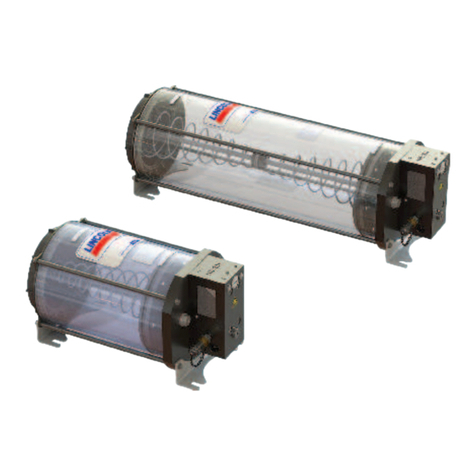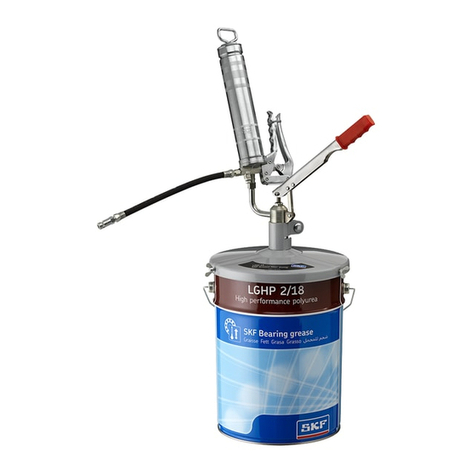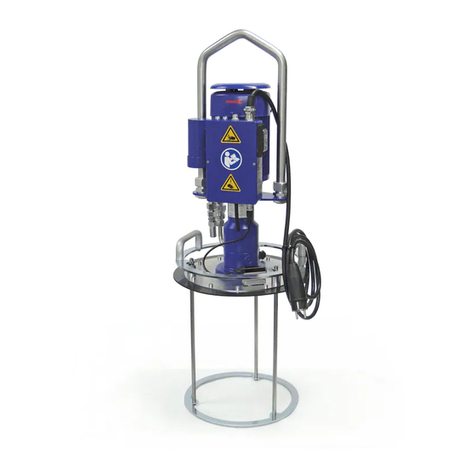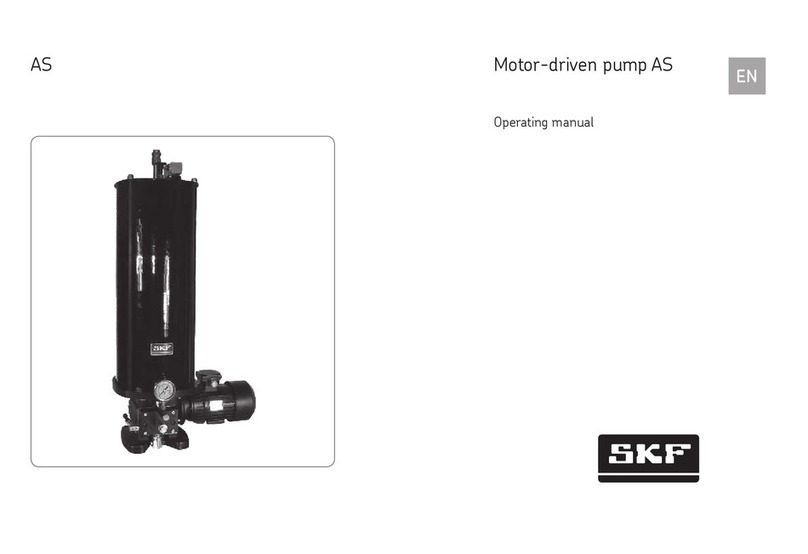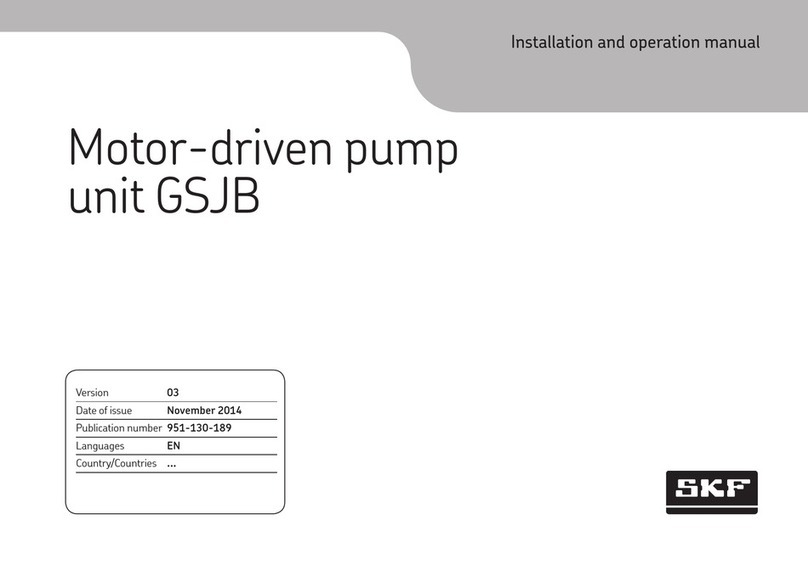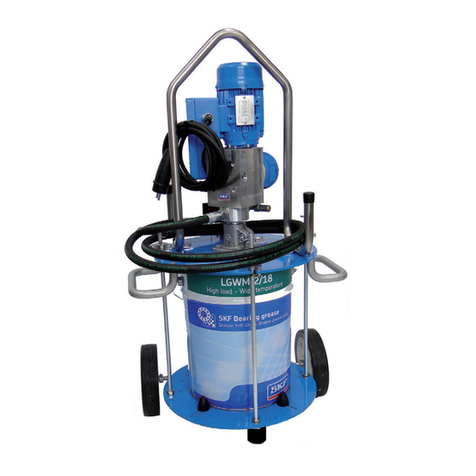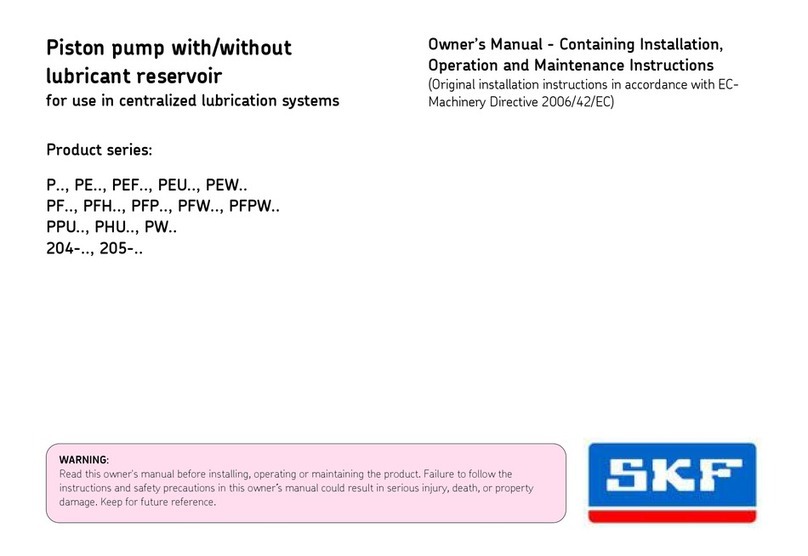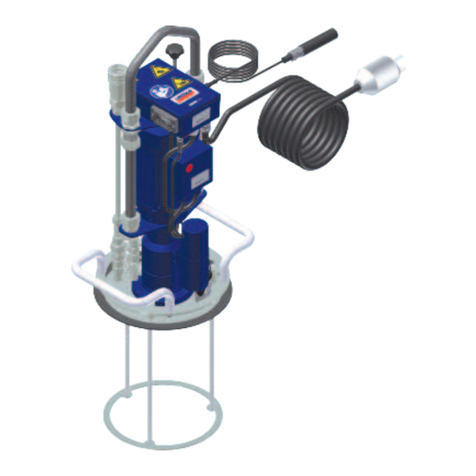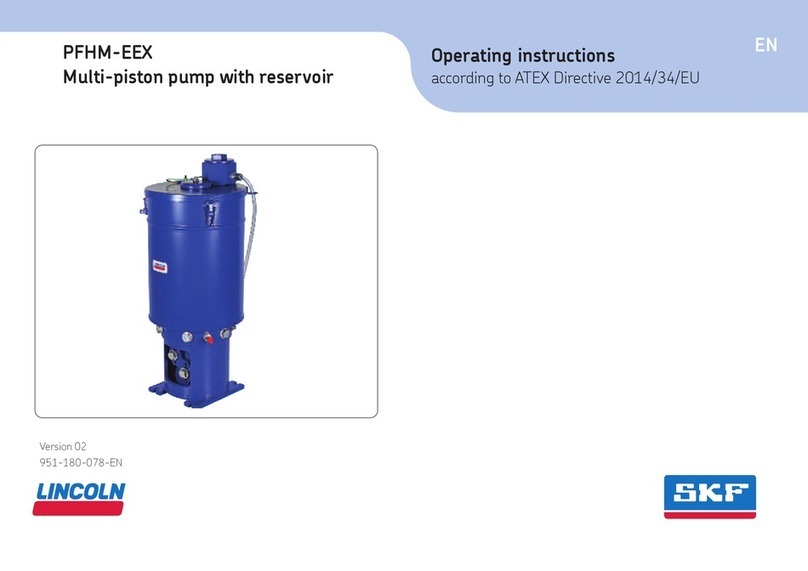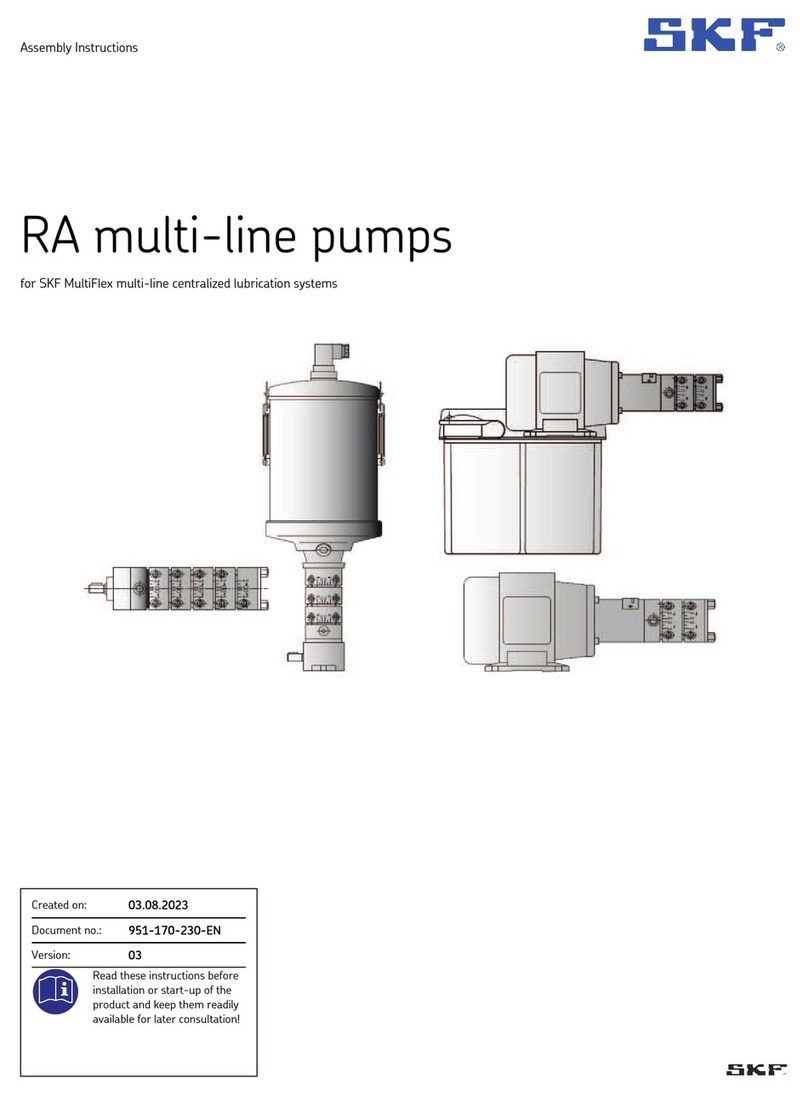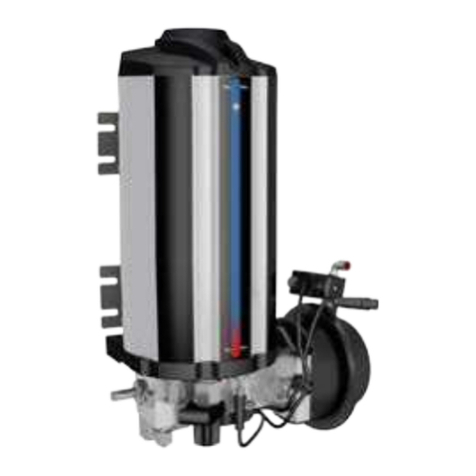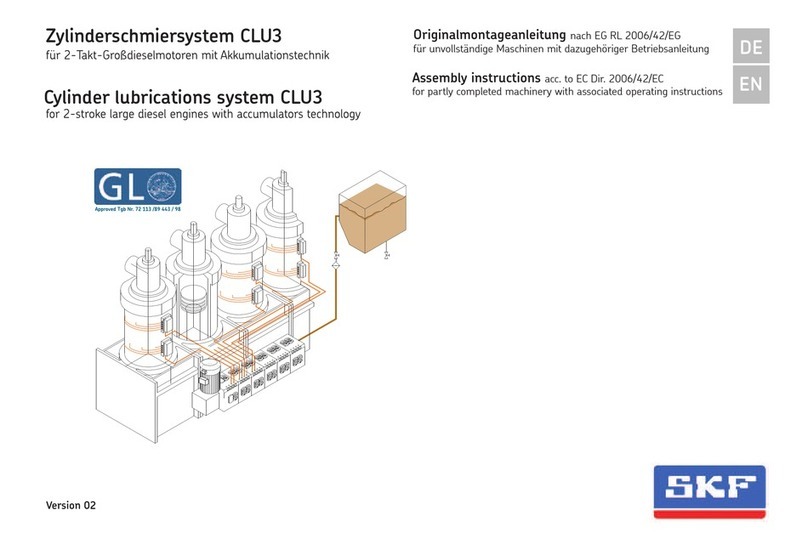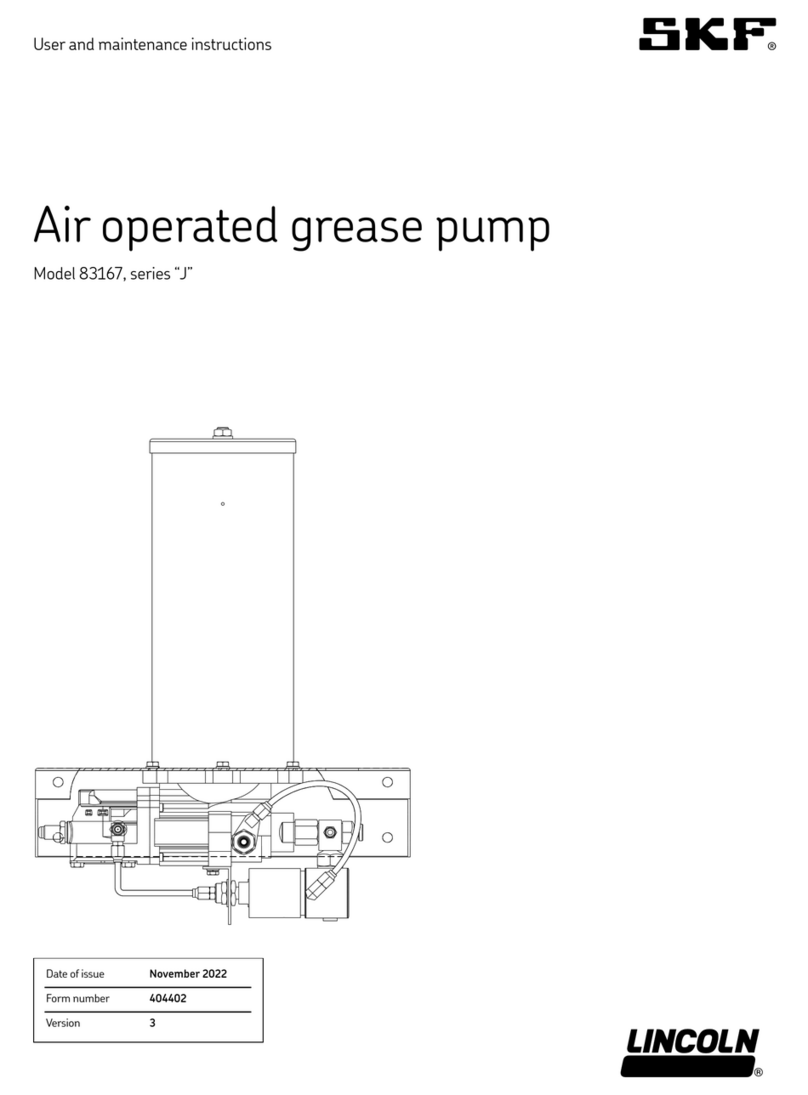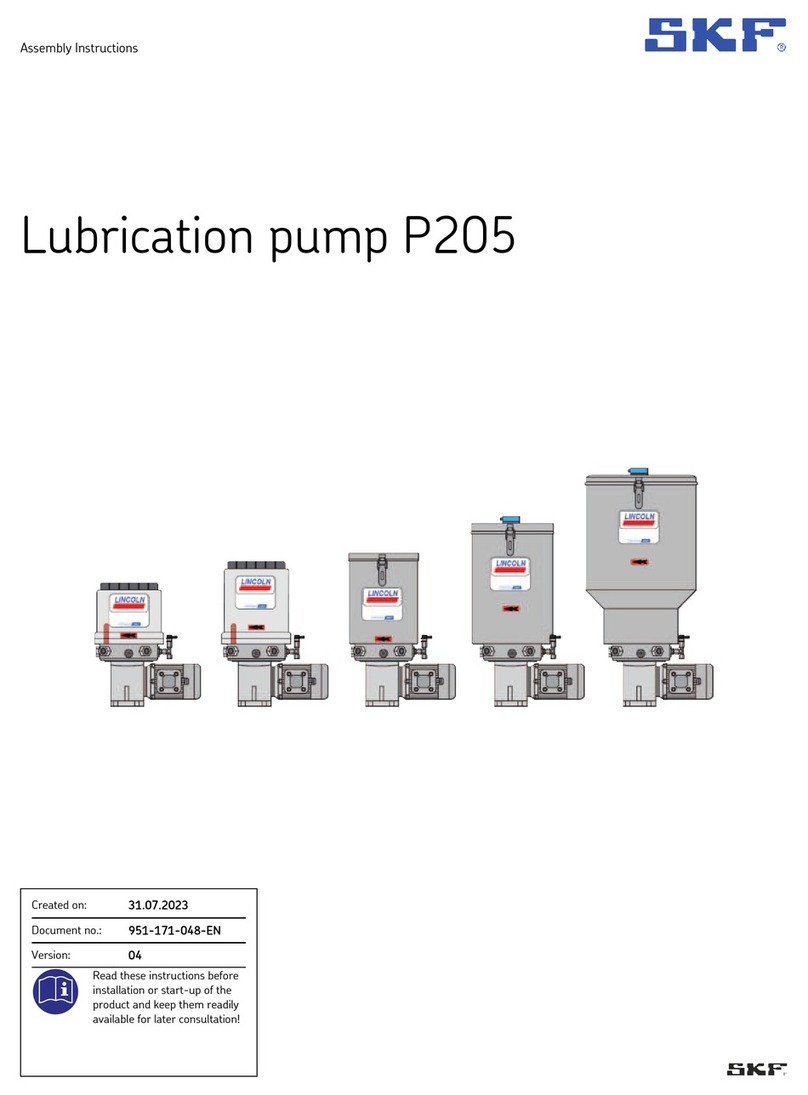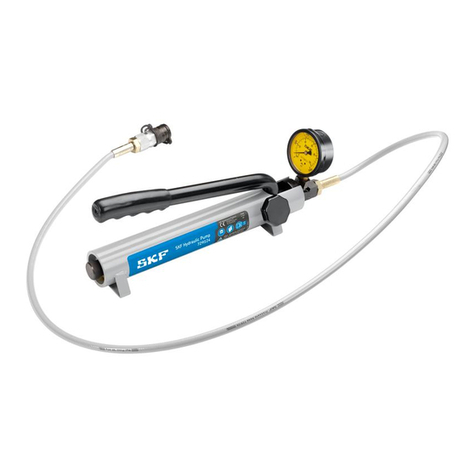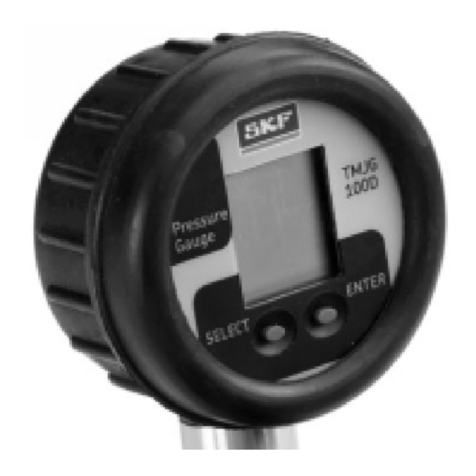
Table
Specifications
Supply inlet hydraulic pressure Maximum psi (207 bar)
Operating working hydraulic pressure to psi (7 to 28 bar)
Maximum output pressure psi (241 bar)
Hydraulic inlet flow Up to gal/min (19 l/min)
Pump ratio with manifold :
Ambient operating temperature – to + °F (–40 to +66 °C)
Operating voltage V
Hydraulic inlet port SAE
Tank return port SAE
Maximum hydraulic fluid temperature °F (93 °C)
Container capacity lbs (27 kg)
WARNING
Do not exceed psi (207 bar)
maximum supply inlet hydraulic
pressure or psi (241 bar)
maximum outlet pressure.
Failure to comply may result in
personal injury and damage to system
components.
Usage
Description
Models , MSO and are
pumping units designed to operate a Centro-
Matic lubrication system. Units includes a
vent valve to relieve line pressure to recharge
injectors. FlowMasterII rotary driven hydraulic
pump includes pressure reducing valve, flow
control valve and solenoid operated
( V ) “on” and “off” valve.
FlowMasterII pump is fully automatic
when used with system controller and
pressure switch. FlowMasterII pump is
double acting, dispensing lubricant on both
“up” and “down” strokes. Unit is designed to
be used with SL-V, SL-, SL-, SL- and
SL- series injectors or a combination of
these injectors.
Model includes follower plate and
mechanical low level indicator.
Model MSO includes follower plate,
mechanical low level indicator, and a
mechanical shut off.
Model has no follower plate and no
low level indicator.
Appropriate use
• Pump on unit is exclusively designed to
pump and dispense lubricants using
hydraulic power only.
• Do not exceed maximum specification
ratings.
• Any other use not in accordance with
instructions will result in loss of claims for
warranty and liability.
Operation with
mechanical shut-off
When attached, a mechanical shut-off
system integrates with bucket pumps to
prevent grease from overfilling during refill
process. System is designed for bucket
pumps with capacity of , , and
lbs (27, 41, 54 and 181 kg). Refer to
for maintenance and operating
instructions if present.
Operation with
system controller
Operation with lube system controller is
recommended. System control must be
capable of operating hydraulic solenoid
valve, supplied with pump, and have
pressure detection or other means to
determine when lube event is complete.
Pump and vent valve operation are
controlled automatically by single solenoid
valve supplied on pump manifold.
System controller determines when lube
event starts and stops. Time is used to start
lube event, and pressure signals to controller
that lube event is complete.
In typical lube event, when system
controller times out, lube cycle is initiated.
Solenoid energizes to deliver hydraulic
pressure to pump and vent valve.
Pump begins dispensing lubricant through
injectors to bearings.
When all bearings have received lubricant,
pressure rises in system to actuate pressure
switch. As pressure switch actuates,
controller resets, de-energizing solenoid
valve, cutting hydraulic oil pressure to pump
and vent valve. Pump stops, pressure vents
and pressure switch de-actuates.
Controller begins timing toward next lube
event.
